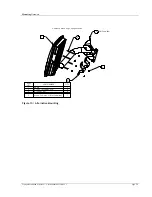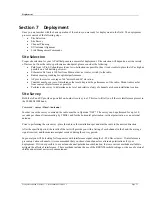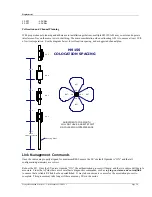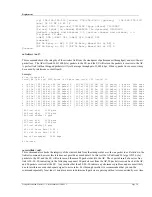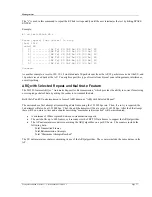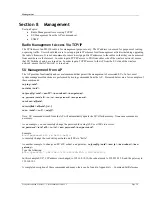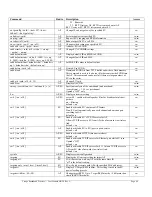
Management
Trango Broadband Wireless — User Manual M915S Rev C
Page
39
Loading Multiple SUs into the SUDB using DLOAD Command
To load a full database of SU entries into the AP’s SUDB, you need to create a subscriber database in ASCII text file
format. As shown below, each row represents all information for one SU. Each column is an information field, which
includes: SU ID, SU to SU group, service level, CIR, MIR, and MAC address.
005 re a B 3000 3000 3000 3000 0000 00 01 de 16 e3 60
007 re a B 3000 3000 3000 3000 0000 00 01 de 16 e3 7c
009 re a B 3000 3000 3000 3000 0000 00 01 de 16 e3 7b
000
---
End
of
file
indicator
--- -- - - ---- ---- ---- ---- ---- -----------------
| | | | | | | | | |
| | | | | | | | | |
| | | | | | | | |
------------- MAC Address
| | | | | | | | |
| | | | | | | | |
| | | | | | | | ----------------------- Reserved (should be 0000)
| | | | | | | |
| | | | | | | |
| | | | | | | ---------------------------- MIR Uplink
| | | | | | |
| | | | | | |
| | | | | | --------------------------------- MIR Downlink
| | | | | |
| | | | | |
| | | | | -------------------------------------- CIR Uplink
| | | | |
| | | | |
| | | | ------------------------------------------ CIR Downlink
| | | |
| | | |
| | | --------------------------------------------- SU2SU Group ID
| | |
| | |
| | ------------------------------------------------ Rate (currently not supported,
| |
value should be a)
| |
| --------------------------------------------------- pr Priority User
|
re Regular User
|
|
------------------------------------------------------ SU ID (1..127)
1. Telnet
into the AP and run the command
tftpd
on
to enable TFTP process.
2. Tftp the file to the AP from your DOS prompt example:
tftp <IP of AP> put mySUs.txt
.
3. From the AP’s telnet session, run the command
sudb dload
to load and activate the SUDB.
4. Run the command
sudb view
to verify the SUDB entries.
Run command
save sudb
to write the SUDB to non-volatile memory.
SNMP
The M915S supports Simple Network Management Protocol (SNMP) for network management. Network management
consists of the following 4 categories: configuration, accounting, alarm, and monitoring and control. These capabilities
allow the network operator to provide superior services through higher network availability and integrated accounting
systems. For more information on SNMP and its uses, you can visit http://www.faqs.org/faqs/snmp-faq/.




